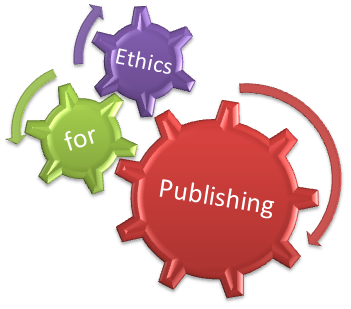Modeling, Analysis and Implementation of an Urban Electric Light-Rail Train Hydrogen Powered
(*) Corresponding author
DOI: https://doi.org/10.15866/iree.v14i4.17629
Abstract
A novel hydrogen power configuration of a Light Hybrid Electric (LHE) rail train able to operate along sub-urban non-electrified rail lines is proposed and analysed in the paper. The electric motors of the emission-free LHE rail train are fed by a hybrid power unit consisting of hydrogen fuel cell stacks and a set of high-speed kinetic energy storage systems. A control strategy of the power-train components has been developed to manage power flows in order to reduce the fuel consumption. This advanced and environment friendly hybrid propulsion system offers the opportunity to increase the power-train efficiency so that the fuel consumption is minimised. Simulator software of the proposed HLE rail train has been implemented in order to design the power-train components and compute train performance. A rail transport service is considered and a round trip journey of the LHE rail train is simulated over an existing re-designed not electrified single track line in the sub-urban area of L’Aquila city (Italy). Furthermore, the specific fuel consumption comparative analysis between the hydrogen rail train and a diesel one running over the selected path in the same operating conditions has been performed and the results are discussed in terms of CO2 emissions too. The results show that the proposed LHE rail train is technically suitable and advantage to operate in urban environment.
Copyright © 2019 Praise Worthy Prize - All rights reserved.
Keywords
References
FSnews. Retrieved from http://www.fsnews.it
Independent Regulator’s Group - Rail. Retrieved from https://www.irg-rail.eu/
N. Giannelli, R. Cariglia, Renewal of the fleet: swing and their services (in Italian), Professional Technique, n. 4, 2016, pp. 29-31.
A. R. Miller, K. S. Hess, D. L. Barnes, T. L. Erickson, System design of a large fuel cell hybrid locomotive, Journal of Power Sources, 173 (2 SPEC. ISS.), 2007, pp. 935-942.
https://doi.org/10.1016/j.jpowsour.2007.08.045
European Commission, White paper on Transport. Retrieved from: https://ec.europa.eu/transport/sites/transport/files/themes/strategies/doc/2011_white_paper/white-paper-illustrated-brochure_en.pdf.
European Commission, Clean Power for Transport: A European alternative fuels strategy. Retrieved from:
https://ec.europa.eu/transport/themes/urban/cpt_en.
Directive 2014/94/EU, Directive 2014/94/EU of the European Parliament and of the council of 22 October 2014 on the deployment of alternative fuels infrastructure. Retrieved from: http://eur-lex.europa.eu/legal content/EN/TXT/?uri=CELEX:32014L0094.
Fraunhofer IVI, AutoTram: technologye for mobility and sustainability in the future, Fraunhofer-Institut für Verkehrs- und Infrastruktursysteme IVI. Retrieved from: http://www.ivi.fraunhofer.de
A. R. Miller, J. Peters, B. E. Smith, O. A. Velev, Analysis of fuel cell hybrid locomotives, Journal Power Sources, Vol 157(2), 2016, pp. 855-861.
https://doi.org/10.1016/j.jpowsour.2005.12.051
A. Hoffrichter, S. Hillmansen, C. Roberts, Conceptual propulsion system design for a hydrogen-powered regional train, IET Electrical Systems in Transportation, Vol 6(2), 2016, pp. 56-66.
https://doi.org/10.1049/iet-est.2014.0049
E. M. Washing, S. S. Pulugurtha, Energy demand and emission production comparison of electric, hydrogen and hydrogen-hybrid light rail trains, International Journal of Rail Transportation Vol. 4, 2016 - Issue 1, pp. 55-70.
https://doi.org/10.1080/23248378.2015.1086554
E.M. Washing, S.S. Pulugurtha, Well-to-wheel analysis of electric and hydrogen light rail, Journal of Public Transportation, 18 (2), 2015, pp. 74-88.
G. D. Marin, G. F. Naterer, K. Gabriel, Rail transportation by hydrogen vs. electrification - Case study for Ontario, Canada, II: Energy supply and distribution, International Journal of Hydro¬gen Energy, Volume 35, Issue 12, June 2010, pp. 6097-6107.
https://doi.org/10.1016/j.ijhydene.2010.03.095
W. Chen, Q. Qian, Q. Li, Investigation status and development trend of hybrid power train based on fuel cell, Xinan Jiaotong Daxue Xuebao/Journal of Southwest Jiaotong University, 44 (1), 2009, pp. 1-6.
J. Kawasaki, S. Takeda, R. Furuta, Development of the fuel cell hybrid railcar, Japanese Railway Engineering, (160), 2008, pp. 6-8.
A.R. Miller, K.S. Hess, D.L. Barnes, T.L. Erickson, System design of a large fuel cell hybrid locomotive, Journal of Power Sources, 173 (2 SPEC. ISS.), 2007, pp. 935-942.
https://doi.org/10.1016/j.jpowsour.2007.08.045
Alloui, H., Khoucha, F., Rizoug, N., Benbouzid, M., Kheloui, A., An Improved Rule- and Frequency Separation-Based Energy Management Strategy for a Fuel Cell Electric Vehicle, (2018) International Journal on Energy Conversion (IRECON), 6 (1), pp. 1-8.
https://doi.org/10.15866/irecon.v6i1.15198
D. Meegahawatte, S. Hillmansen, C. Roberts, M. Falco, A. McGordon, P. Jennings, Analysis of a fuel cell hybrid commuter railway vehicle, Journal of Power Sources, 195 (23), 2010, pp. 7829-7837.
https://doi.org/10.1016/j.jpowsour.2010.02.025
A. Hoffrichter, P. Fisher, J. Tutcher, S. Hillmansen, C. Roberts, Performance evaluation of the hydrogen-powered prototype locomotive 'Hydrogen Pioneer', Journal of Power Sources, 250, 2014, pp. 120-127.
https://doi.org/10.1016/j.jpowsour.2013.10.134
Bloomberg. China's Hydrogen-Powered Future Starts in Trams, Not Cars.
Retrieved from: https://www.bloomberg.com
Japanese fuel cell rail vehicle in running tests. Fuel Cells Bulletin, Elsevier, Dec. 2006 (12), Issue 12, pp. 2-3.
https://doi.org/10.1016/s1464-2859(06)71254-8
Alstom unveils its zero-emission train Coradia iLint at InnoTrans. Retrieved from: http://www.alstom.com
G. D’Ovidio, A. Carpenito, C. Masciovecchio, A. Ometto, Preliminary analysis on advanced technologies for hydrogen light-rail train application in sub-urban non electrified routes, Ingegneria Ferroviaria, Vol. n. 11, Roma, Nov. 2017, pp. 868-878.
S. M. Mousavi G, F. Faraji, A. Majazi, K. Al-Haddad, A comprehensive review of Flywheel Energy Storage System technology, Renewable and Sustainable Energy Reviews, 67, 2017, pp. 477-490.
https://doi.org/10.1016/j.rser.2016.09.060
S. Wicki, E.G. Hansen, Clean energy storage technology in the making, An innovation systems perspective on flywheel energy storage, Journal of Cleaner Production, 162, 2017, pp. 1118-1134.
https://doi.org/10.1016/j.jclepro.2017.05.132
C. Śliwiński, Kinetic energy recovery systems in motor vehicles, IOP Conference Series: Materials Science and Engineering, 148, 2016.
https://doi.org/10.1088/1757-899x/148/1/012056
M. Hedlund, J. Lundin, J. de Santiago, J. Abrahamsson, H. Bernhoff, Flywheel energy storage for automotive applications, Energies, 8 (10), 2015, pp. 10636-10663.
https://doi.org/10.3390/en81010636
G.N. Prodromidis, F.A. Countelieris, Simulations of economical and technical feasibility of battery and flywheel hybrid energy storage systems in autonomous projects, Renew. Energy, Vol. 39, 2012, pp. 149–153.
https://doi.org/10.1016/j.renene.2011.07.041
Boubaker, B., Mustapha, T., Houari, K., Hybrid Storage System Energy Management Based on a Predictive Current Controller, (2018) International Journal on Energy Conversion (IRECON), 6 (4), pp. 121-128.
https://doi.org/10.15866/irecon.v6i4.15790
C.S. Hearn, M.M. Flynn, M.C. Lewis, et al., Low cost flywheel energy storage for a fuel cell powered transit bus, IEEE Vehicle Power and Propulsion Conf. VPPC, 9–12 September 2007, pp. 829–836.
https://doi.org/10.1109/vppc.2007.4544239
M. M. Flynn, J.J. Zirer, R.C. Thompson, Performance testing of a vehicular flywheel energy system, SAE World Conf., Detroit, MI, April 2005.
J.G. Bitterly, Flywheel technology: Past, present, and 21st century projections, IEEE Aerospace and Electronic Systems Magazine, 13 (8), 1998, pp. 13-16.
https://doi.org/10.1109/62.707557
N. Koshizuka, F. Ishikawa, H. Nasub, et al., Present status of R&D on superconducting magnetic bearing technologies for flywheel energy storage system, Physica C, Supercond., 2002, pp. 378–381, Part 1, 11–17.
https://doi.org/10.1016/s0921-4534(02)01374-6
G. D’Ovidio, C. Masciovecchio, A. Rotondale, Hydrogen fuel cell and kinetic energy recover system technologies for powering urban bus with zero emission energy cycle, IET Intelligent Transport System, 2016, pp. 573-578.
https://doi.org/10.1049/iet-its.2015.0201
F. Ciancetta, A. Ometto, A. Rotondale, N. Rotondale, G. D'Ovidio, C. Masciovecchio, Analysis of flywheel-fuel cell system for mini electrical bus during an urban route, International Symposium on Power Electronics, Electrical Drives, Automation and Motion, SPEEDAM 2016, art. no. 7525925, pp. 1093-1098.
https://doi.org/10.1109/speedam.2016.7525925
G. D’Ovidio, Design of a hybrid power plant for city buses, World Electr. Veh. Assoc. J., Vol. 1, 2007, pp. 68–72.
R. F. Thelen, J. D. Herbst, M. T. Caprio, A 2MW Flywheel for Hybrid Locomotive Power, IEEE Vehicular technologic conference, Orlando, Florida, USA, 2003, pp 3231-3235.
https://doi.org/10.1109/vetecf.2003.1286244
M. Spiryagin, P. Wolfs, F. Szanto, Y.Q. Sun, C. Cole, D. Nielsen, Application of flywheel energy storage for heavy haul locomotives, Applied Energy, 2016, pp. 607-618.
https://doi.org/10.1016/j.apenergy.2015.02.082
M.G. Read, R.A. Smith, K.R. Pullen, Are flywheels right for rail? IJR International Journal of Railway, Vol. 2, N. 4, 2009, pp. 139-146.
P. Jandura, A. Richter, Z. Ferková, Flywheel energy storage system for city railway, International Symposium on Power Electronics, Electrical Drives, Automation and Motion, Anacapri, Italy, June 2016, pp. 1155-1159.
https://doi.org/10.1109/speedam.2016.7525923
A. Rupp, H. Baier, P. Mertiny, M. Secanell, Analysis of a flywheel energy storage system for light rail transit, Energy, 2016, pp. 625-638.
https://doi.org/10.1016/j.energy.2016.04.051
L. LiY, X.Z. Zhang, X.J. Dai, Flywheel energy storage system for city trains to save energy, Advanced Mater Res, Vol. 512, 2012, pp 1045-1048.
https://doi.org/10.4028/www.scientific.net/amr.512-515.1045
Scilab. https://www.scilab.org/
A. Dicks, J. Larminie, M. S. McDonald, Fuel Cell Systems Explained, Chichester, UK: J. Wiley, 2003.
C. Voigt, S. Hoeller, U. Kueter, Fuel Cell Technology for Classroom Instruction. Wasserstoff-Energie-Systeme Gmb, Luebeck, 2016.
G. Bucci, E. Fiorucci, F. Ciancetta, M. Luiso, Measuring system for microelectric power. IEEE Transactions on Instrumentation and Measurement, Volume 63, Issue 2, Feb. 2014, Article number 19, pp. 410-421.
https://doi.org/10.1109/tim.2013.2280475
F. Ciancetta, A. Ometto, N. Rotondale, Analysis of PEM fuel cell–supercapacitor–battery pack system during standard cycle. SPEEDAM Conf., Pisa, Italy, 14–16 June 2010.
https://doi.org/10.1109/speedam.2010.5542077
G. Bucci, F. Ciancetta, E. Fiorucci, et al, An experimental ap-proach to the modeling of PEM fuel cells in dynamic conditions, IEEE Powertech, Lausanne, Switzerland, 1–5 July 2007.
https://doi.org/10.1109/pct.2007.4538468
G. Bucci, F. Ciancetta, E. Fiorucci, N. Rotondale, F. Vegliò, Experimental Validation of a PEM Fuel Cell Dynamic Model. Symposium on Power Electronics, Electrical Drives, Automation and Motion (SPEEDAM 2006), Taormina, Italy, May 23-26 2006, pp. 546-551.
https://doi.org/10.1109/speedam.2006.1649832
Ecopassenger Methodology Report.
Retrieved from: http://info.rejseplanen.dk
Refbacks
- There are currently no refbacks.
Please send any question about this web site to info@praiseworthyprize.com
Copyright © 2005-2024 Praise Worthy Prize








